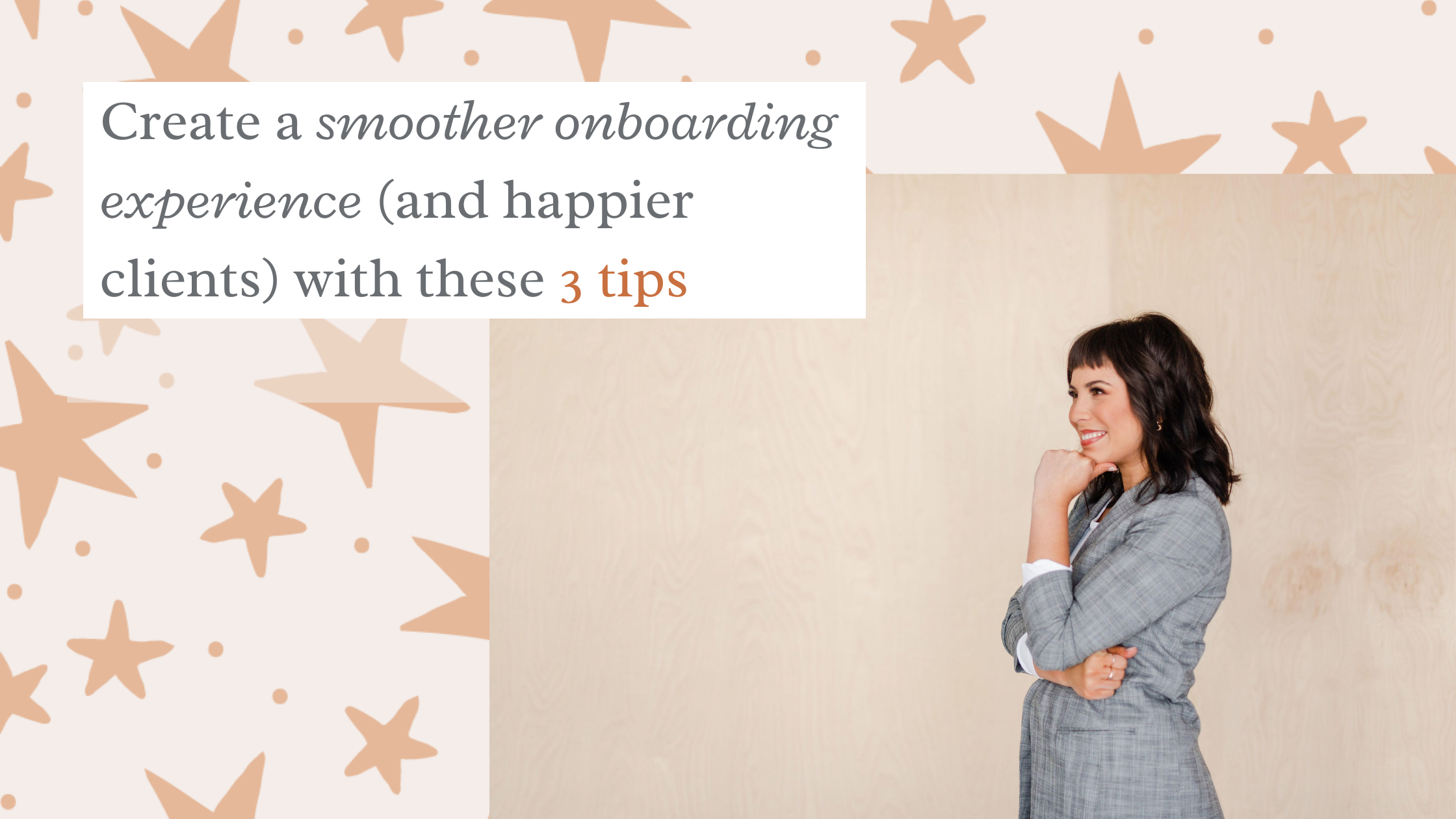3 tips to improve your client onboarding process (and their experience)
You know why I like you so much? You care.
You care about your work, you care about how your work and business are perceived, and you care about the people you work with. Which is why you clicked on this blog, right?
Providing an incredible client onboarding process and customer experience shouldn’t just matter to those, like you, who *especially* care, however. It should matter to everyone. Why?
Well, a great client experience means peace of mind, which means sleeping better, which means fulfillment. A great client experience also means referrals, which means less marketing and less work are needed to book more happy clients and customers in the future!
See? We like happy clients.
Now, the best part? Creating an incredible client experience is easy. Truly. The sad part is that it’s actually more difficult to create a poor customer or client experience (so, yeah, take a moment to lament the woes of your most recent poor experience with a business. I’ll wait).
So, let’s chat through a few easy ways for you to improve your client onboarding process, so that you can have happy clients and customers.
3 Tips For Your Client Onboarding Process
1. Always, always set expectations right at the start.
Think back to your last poor experience as a paying customer or client. I’m willing to bet that you likely had such a poor experience, because that business failed to set proper expectations about shipping, turnaround timelines, the process, or more. If you really think about it, your poor experience could have been salvaged, had that business taken the time to set the proper expectations.
Because really, as consumers, we’re fairly rational. All we want to know is that the money we’re entrusting to said company is going to go to the right place, and provide the outcome we’re expecting. Right?
Right.
So, set expectations with your clients, immediately. And by immediately, I mean, during the discovery call, and then again in the proposal, then again in the contract. Hey, if you can even include those expectations in your email signature (i.e., your office hours and response timeframe), even better.
No one has ever, ever complained about a business that over communicates. Clients and customers just don’t want to be left in the dark - and that’s completely understandable.
2. Provide frequent updates and check-ins, even if they sound redundant or repetitive.
They might sound repetitive to you, but that’s because you’re the person who has all of the information. So, throughout the project, provide frequent check-ins and updates. Let your clients know where you are in the process, and what you’re working on.
Do your best to automate these check-ins if you can! If your typical project timeline is 4-8 weeks and you want to check in with that client every week, create 4-8 email templates so that you can just plug in your customized update for that particular client, each and every week.
Updates could include frequently asked questions, behind the scenes of their project, how to use the thing you’re creating for them, and so much more. Your clients will feel valued and cared for, and it’ll require minimal effort from you.
3. Put kindness first, always (and never at the sake of your boundaries).
Quite honestly, I should’ve put this one at the top of the list. Kindness will get you far as a business owner - but never mistake kindness, for failing to stand firm within your boundaries.
As an example, I recently had a poor experience with a business as a paying customer. I kindly reached out to ask how things were progressing with an item I pre-ordered several weeks before, and received an unkind (and condescending) reply.
Now, would I have been frustrated if the response had been kind? Absolutely not. Even if it meant the business was failing, once again, to deliver within the timeline they had promised me from the start (*cough* read step one, folks *cough*). But the sheer condescension (THE AUDACITY!) made me suddenly feel concerned about the fact that I had entrusted this brand with my hard-earned money.
What did we learn from that experience? Well, I probably (actually, definitely) would have been fine with the information the business shared with me, had it been done in a kind manner. But because the response was very unkind, I was not.
Let’s go over another example, but from another perspective. If your client is encroaching on your boundaries, or asking for things that they know they cannot have, you have a right to stand firm in your boundaries - and you can do so from a place of kindness. Not only will that client likely be more receptive, but you won’t have to feel so… icky about it, either.
So, stay kind. It pays off, I promise.
By taking the time to perfect your client onboarding process, you’re paving the way for a beautiful, healthy and happy client experience. And speaking of boundaries, I’ve got a FREE email template that’ll help you set better boundaries with your clients. Download it now!


